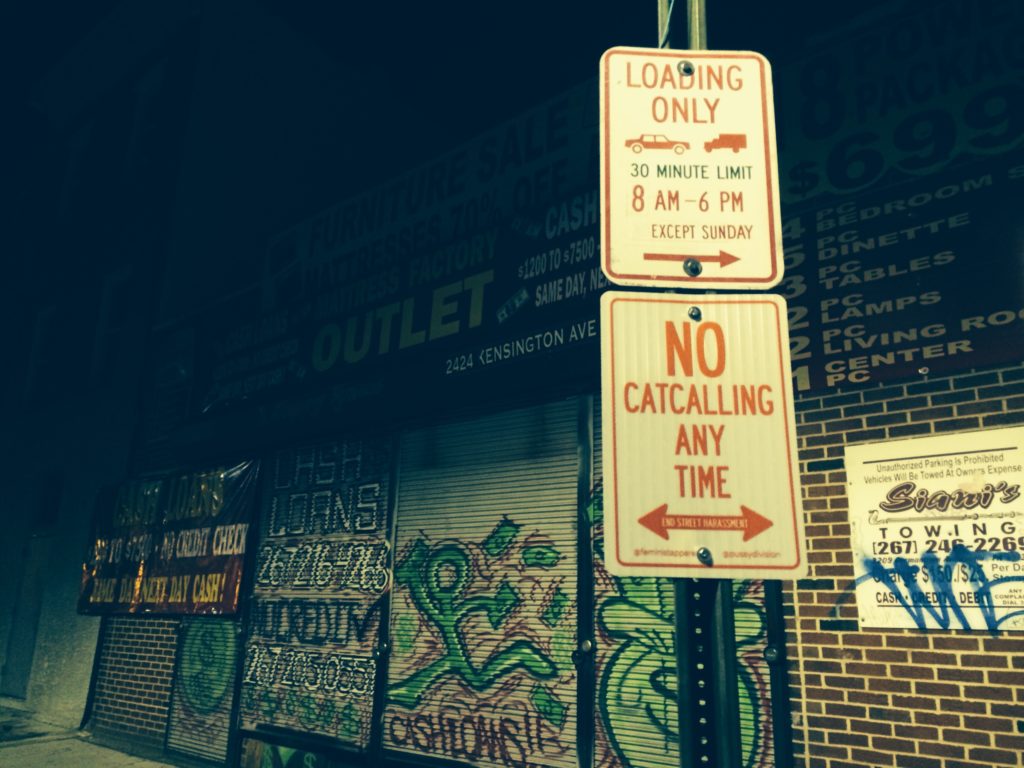Elizabeth Kuster, Brooklyn, NY, USA, SSH Blog Correspondent
Like most women, I’m out and about in public a lot — going to work, running errands, meeting friends downtown. And like most women, I get attention from men — young and old; white, black, Hispanic; well dressed and not — as I go about my daily routine. I’ve been whistled at and pinched. I’ve received thousands of “Hey, sexy”s and “Wanna f*ck?”s. I’ve been stared at. I’ve been followed. I’ve had my hair, breasts and behind stroked.
It has happened to me so often that I started to get used to it, told myself it was normal.
“It’s just the city,” I said.
“It’s what I was wearing,” I said.
It’s no big deal,” I said.
I was wrong. It’s street harassment, and I’m not alone. It happens to millions of women every day. And it’s time we do something about it.
So began “Don’t ‘Hey, Baby’ Me: How To Fight Street Harassment,” the first-ever mainstream-media article on the subject, which I pitched and wrote for Glamour magazine in 1992. Since no studies about street harassment had been conducted at that time, I had to break up the subject into its various components and tackle each one individually. I covered aspects such as improper touch. Sexual profanities. Objectifying language. Physically intimidating behaviors such as staring and stalking. And I delved into how each of those male behaviors changed the way women behaved when they went out in public.
To get a chorus of women’s voices, I sent a shout-out to Glamour staffers and contacted friends, family and stringers in other states. I had 10 of them keep street-harassment diaries for seven days, listing every single comment, look or gesture they received. To debunk the myth that what you wear invites harassment, I and several other women from Glamour were photographed on the street in our regular clothes, after which each of us set off alone for a different New York City neighborhood, where we, too, detailed the incidents of street harassment we received.
I called the NYPD press office, told them what I was working on, and was forwarded to a male police officer — who proved to be so patronizing that I didn’t even quote him in my article. Incredulous at being interviewed by someone from Glamour in the first place, he literally laughed at my questions and said — and this I did quote in the piece — “Street comments are not a serious problem.”
I interviewed Naomi Wolf, feminist author of The Beauty Myth. “Our taxes go for the upkeep of parks and streets, but women do not own full use of them because of street harassment,” she said.
I interviewed Callie Khouri, the screenwriter who’d taken the world by storm with her Oscar-winning script for the feminist blockbuster Thelma & Louise. “A woman who enjoys being yelled at on the street is a woman who has been socialized to think that she is valued and defined by her sexuality,” she said.
I interviewed Carol Brooks Gardner, a professor of sociology and women’s studies and author of the book Passing By: Gender and Public Harassment. “I’ve talked to [many] women who complained to police officers who were right there and saw what happened, yet they didn’t do anything,” she said.
I interviewed D.C. police officer Patricia Harman, author of the newly published book The Danger Zone: How You Can Protect Yourself from Rape, Robbery and Assault. “[Harassers] have watched their fathers do it, their brothers do it. The only way we’re going to get a handle on it is if we start with the next generation,” she said.
And I interviewed Cheris Kramarae, a professor of speech communication and sociology. “Organized anger will eventually make a difference,” she said.
You can read my article in its entirety via my online portfolio. I’m still proud of it. At the time, it received critical acclaim — and a respectable landslide of reader mail, mostly from women who had their own street-harassment stories to tell. They were grateful, at long last, to finally have a name for the discrete and difficult-to-describe form of sexual abuse they’d been enduring out in public all their lives.

Oh, how I wish social media had existed at the time! Had I been able to start a #StopStreetHarassment initiative back then, we might not still be dealing with the issue today.
Elizabeth pitched and wrote the very first mainstream-media article about street harassment. She has held full-time editorial positions at publications such as Glamour, Seventeen and The Huffington Post and is author of the self-help/humor book Exorcising Your Ex. You can follow Elizabeth on Twitter at @bethmonster.

ninyabruja says
Rebecca Walker also described an instance of train harassment in an essay in Ms. that year :https://www.google.com/url?sa=t&source=web&rct=j&url=http://www.msmagazine.com/spring2002/BecomingThirdWaveRebeccaWalker.pdf&ved=2ahUKEwiur5zvtMbZAhXL6oMKHY7kAZwQFjAAegQIBxAB&usg=AOvVaw171GJ-FeSiDXyT0xlhCXn_